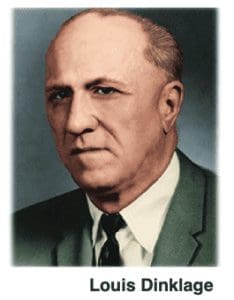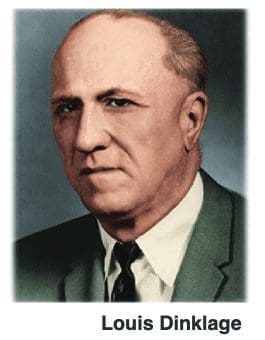By Patti Wilson Contributing Editor
 The tragic, heat-related deaths of feedlot cattle in the Plains states this summer sent me scrambling to write an appropriate column addressing this matter. It cannot be ignored and, at the same time, is painful to face.
The tragic, heat-related deaths of feedlot cattle in the Plains states this summer sent me scrambling to write an appropriate column addressing this matter. It cannot be ignored and, at the same time, is painful to face.
The heat of summer not only has caused death loss, it has also heated up plenty of political rhetoric and made the national news – bad for all of us, all the way around. I have been involved with cattle every day of my life, including the feeding sector, yet I don’t want to write a “how-to” article on dissipating heat in market-ready animals during a 100-year weather event. There are far more people reading this publication who are more knowledgeable about that topic than I. Many thanks go to Harvey Dann of West St. Paul, Manitoba, Canada, for taking time to work with me to provide an appropriate article for CALF News.
Dann and his daughter, Jackie, run Alert Agri Distributors Inc., an export business that ships fat cattle to U.S. packing plants. They also broker trucks, moving breeding cattle, fats and feeders, and source specialized equipment, predominantly in western Canada. Dann is working with a waterer manufacturer in designing water tanks for cattle, as well.
Water, the Most Important Nutrient
Dann is extremely well-traveled and familiar with the U.S. cattle industry. The story he referred to most frequently, and the one that has had the most effect on his life, regards Louie Dinklage. Dann was a 25-year-old farmer feeder in the spring of 1966. He found himself at the Dinklage lot at Wisner, Neb., where Louie Dinklage himself gave him the grand tour. Along with the tour came a sage piece of advice: “Son, water is your cheapest gain,” Dinklage said.
At face value, that might sound like tanking up your cattle prior to an important trip to the scale. It is not. The remark refers to a far bigger picture. Dann regards water as the first limiting nutrient in 90 percent of feedlots in North America. He emphasizes that he “has no letters behind his name,” but has 59 years of experience in different segments of the cattle feeding industry. In addition, he is well-read on research involving water intake for cattle and has practical experience from his travels and interaction with clients.
A Common-Sense Approach ‘Son, Water Is Your Cheapest Gain’
Observing cattle behavior was an important step in designing a water tank that delivers optimum water intake for bovines. Shallower-built tanks suit cattle better than deep ones. Being prey animals, they are more comfortable when they can see over the top of the tank rather than dipping their heads deep into a container and risk being blinded to danger, even for a short time. Even more interesting is that if water is moving, cattle will spend more time drinking. This is the next behavior to study.
The guts of our conversation centered on the importance of adequate tank space, whether it is a feedlot pen, a pasture of yearling steers or a dairy barn. According to Dann, in the summer, feedlot cattle need three linear inches of space per head, measured the “long way.” One inch suffices in the winter. He has seen feedlots that provide less than one-half inch of linear space per head, an insufficient amount, given that 17 percent of a group of cattle will be watering at any given time.
Getting back to animal behavior, this causes bad problems. Cattle are social animals with a distinct pecking order. Bigger, older or more aggressive animals are going to deny or delay access to bunks and tanks to those smaller and more submissive. Eventually, the submissive ones give up.
Jack Reeb, DVM, retired dairy veterinarian from Lockport, Manitoba, Canada, has observed submissive cows walking past the water tank rather than risk taking a beating from the boss cows. How do they survive? Be decreasing their dry matter intake and thereby reducing milk production. In a June 15, 2022, letter to Dann, Reeb described clients who increased water trough availability to a more useable four linear inches per head. Because the cows slowly modified their behavior, results were not immediate. However, a gradual change for the positive occurred in all production areas, including health. It took several weeks for submissive cows to acclimate to the more adequate tank space. Reeb said the benefits were profound.
So What’s the Problem?
Dann often recommends replacing inadequate waterers with long, shallow tanks. He uses 1.5-inch valves to refill the vessels quickly, and 4-inch outlets for fast and effective tank flushing during cleanout. A new system of stainless steel or concrete tanks, built to the right length and 30 inches wide (inside measurement) is recommended. The most frequent complaint is that the equipment is too expensive to replace, to which he replies that the benefits will pay for the new units in one year.
To be specific, Dann pointed out that if any class of cattle are deficient in water, they are inefficient in the use of every other production input. In addition, an obvious benefit of adequate water intake is the increased mitigation of accumulated body heat on heat-stress days.
Some Specifics
My research on this topic yielded a plethora of scientific articles via Terry Mader, Ph.D., professor emeritus, University of Nebraska, Lincoln (UNL). Dann provided even more. Rather than quote specific research numbers and diagrams, I will refer you to my interview with the practical Canadian. It is more to the point. He cites an Australian feedlot research paper that indicates a requirement of 3.5 pounds of water for the intake of one pound of dry matter. Consumption of less water means less feed intake and less gain. Implants may increase gains by 1 to 2 percent, but a shortage of water will make that investment nil. Fixed cost per pound of gain increases as gain per day decreases, along with a decrease in feed efficiency.
Feel free to surf the internet for more specifics, as well as advice about things you already know. For example, cattle need shade, sprinklers and good ventilation.
Final Thoughts
Dann is entertaining and outspoken. He left me with a very positive thought: “I want my customers to be the most competitive in the world.”
Customers or not, he’s worth a good listen. If you require more information, you may contact Harvey Dann at (701) 213-8246 or at harvey@alertagri.ca.







